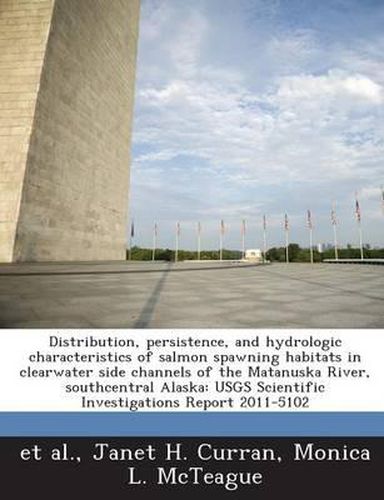Readings Newsletter
Become a Readings Member to make your shopping experience even easier.
Sign in or sign up for free!
You’re not far away from qualifying for FREE standard shipping within Australia
You’ve qualified for FREE standard shipping within Australia
The cart is loading…






Turbid, glacially influenced rivers are often considered to be poor salmon spawning and rearing habitats and, consequently, little is known about salmon habitats that do occur within rivers of this type. To better understand salmon spawning habitats in the Matanuska River of southcentral Alaska, the distribution and characteristics of clearwater side-channel spawning habitats were determined and compared to spawning habitats in tributaries. More than 100 kilometers of clearwater side channels within the braided mainstem of the Matanuska River were mapped for 2006 from aerial images and ground-based surveys. In reaches selected for historical analysis, side channel locations shifted appreciably between 1949 and 2006, but the relative abundance of clearwater side channels was fairly stable during the same period. Geospatial analysis of side channel distribution shows side channels typically positioned along abandoned bars at the braid plain margin rather than on bars between mainstem channels, and shows a strong correlation of channel abundance with braid plain width. Physical and geomorphic characteristics of the channel and chemical character of the water measured at 19 side channel sites, 6 tributary sites, 4 spring sites, and 5 mainstem channel sites showed conditions suitable for salmon spawning in side channels and tributaries, and a correlation of side channel characteristics with the respective tributary or groundwater source water. Autumn-through-spring monitoring of intergravel water temperatures adjacent to salmon redds (nests) in three side channels and two tributaries indicate adequate accumulated thermal units for incubation and emergence of salmon in side channels and relatively low accumulated thermal units in tributaries.
$9.00 standard shipping within Australia
FREE standard shipping within Australia for orders over $100.00
Express & International shipping calculated at checkout
Turbid, glacially influenced rivers are often considered to be poor salmon spawning and rearing habitats and, consequently, little is known about salmon habitats that do occur within rivers of this type. To better understand salmon spawning habitats in the Matanuska River of southcentral Alaska, the distribution and characteristics of clearwater side-channel spawning habitats were determined and compared to spawning habitats in tributaries. More than 100 kilometers of clearwater side channels within the braided mainstem of the Matanuska River were mapped for 2006 from aerial images and ground-based surveys. In reaches selected for historical analysis, side channel locations shifted appreciably between 1949 and 2006, but the relative abundance of clearwater side channels was fairly stable during the same period. Geospatial analysis of side channel distribution shows side channels typically positioned along abandoned bars at the braid plain margin rather than on bars between mainstem channels, and shows a strong correlation of channel abundance with braid plain width. Physical and geomorphic characteristics of the channel and chemical character of the water measured at 19 side channel sites, 6 tributary sites, 4 spring sites, and 5 mainstem channel sites showed conditions suitable for salmon spawning in side channels and tributaries, and a correlation of side channel characteristics with the respective tributary or groundwater source water. Autumn-through-spring monitoring of intergravel water temperatures adjacent to salmon redds (nests) in three side channels and two tributaries indicate adequate accumulated thermal units for incubation and emergence of salmon in side channels and relatively low accumulated thermal units in tributaries.